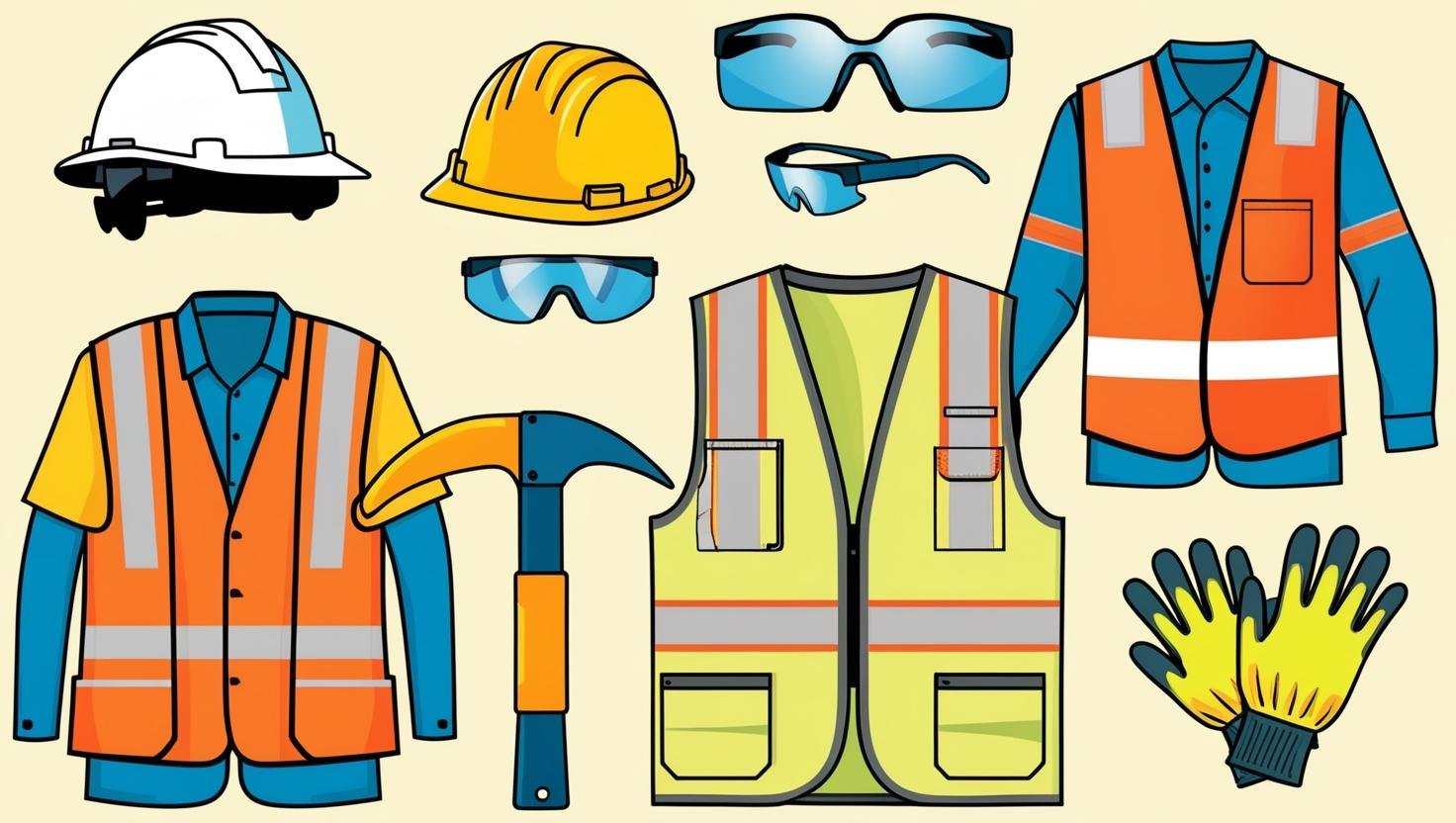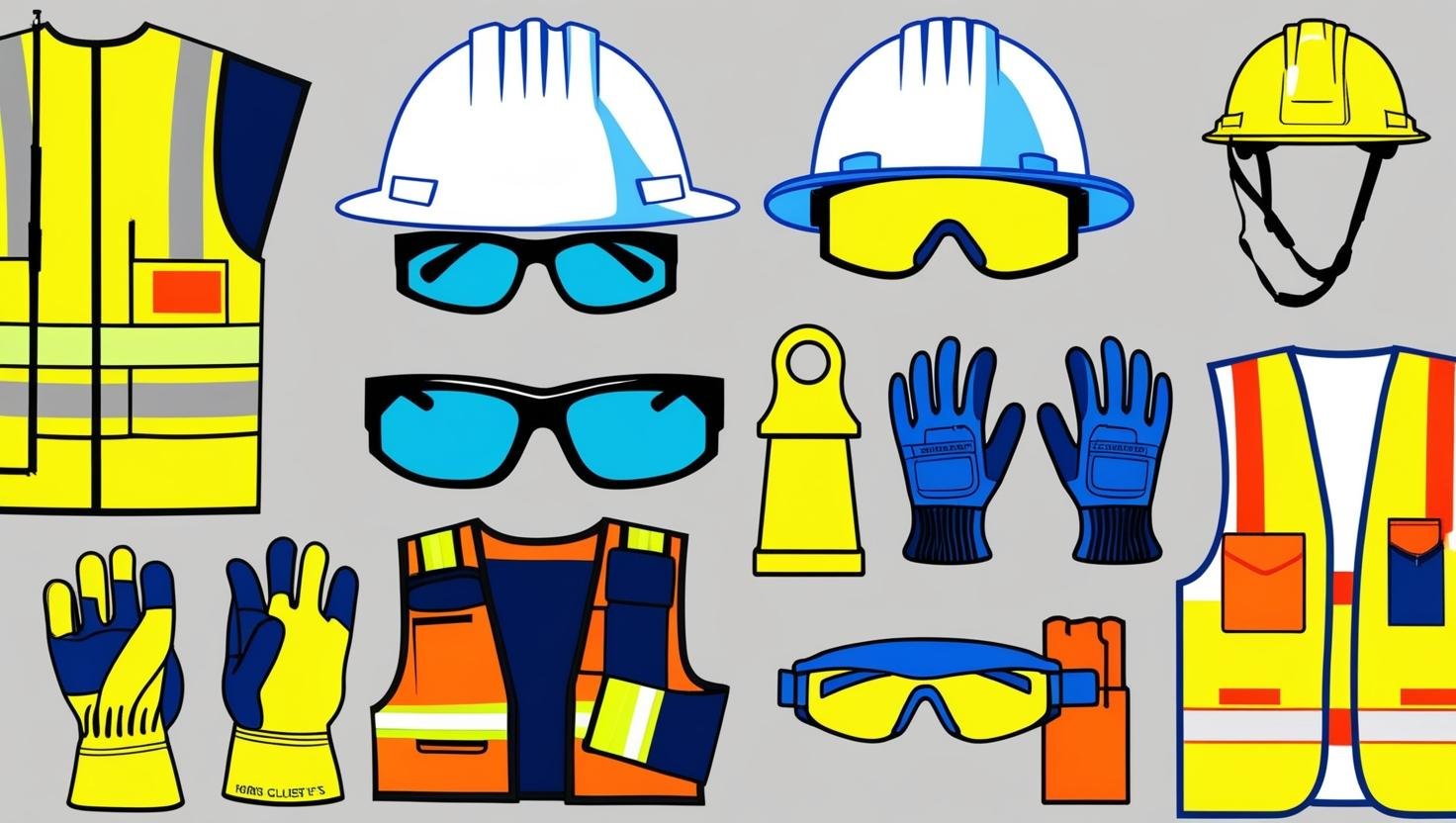Essential Site Safety Wear Update: Prioritizing Protection with the Right Workwear Clothing Choices for May 2025
 With the construction, manufacturing, and industrial sectors gearing up for heightened standards in May 2025, the emphasis on ensuring optimal site safety wear has never been more critical. Employers, workers, and industry stakeholders need to align with updated compliance requirements while keeping safety and comfort a priority.
With the construction, manufacturing, and industrial sectors gearing up for heightened standards in May 2025, the emphasis on ensuring optimal site safety wear has never been more critical. Employers, workers, and industry stakeholders need to align with updated compliance requirements while keeping safety and comfort a priority.
Why Prioritize Safety Wear in 2025?
Safety wear is more than just protective clothing—it is your frontline defense against workplace hazards. The latest updates for May 2025 emphasize how proper selection of workwear can prevent accidents, ensure compliance with industry regulations, and foster productive work environments.
Key reasons to prioritize safety wear include:
Compliance with Updated Regulations: As industries evolve, so do safety laws. Workplaces that fail to meet these requirements risk penalties, injuries, and reputational harm.
Enhanced Protection Against Emerging Hazards: Technology advancements have led to safer, more durable materials tailored to specific industries.
Health and Comfort: Modern workwear integrates ergonomic designs and breathable materials, ensuring workers can perform better without compromising their safety.
Reputation and Accountability: Companies that prioritize safety earn trust and brand loyalty.
Top Workwear Safety Essentials for May 2025
Here are the most crucial elements of protective gear to consider in your workwear update for May 2025:
High Visibility Clothing
High visibility clothing is a must, especially for environments with heavy machinery, limited lighting, or high traffic areas. For May 2025, updates include higher reflectivity standards and fabrics that maintain visibility in challenging conditions, such as rain or fog.
Key features to look for:
- Reflective trims and patterns visible up to 500 meters.
- Lightweight fabric combinations of polyester with micro-glass beads for extended durability.
- Coverage options, including vests, jackets, and trousers.
Protective Helmets with Enhanced Technology

In line with the updates, helmets now integrate advanced features such as energy absorption, sensors for impact alerts, and improved chin straps to offer better head protection.
Why it’s essential:
- Reduces head injury risk.
- Alerts supervisors to potential helmet damage.
- Enhanced comfort reduces worker fatigue.
Cut-Resistant Gloves
Worker hands are often exposed to sharp edges, rough surfaces, and harmful chemicals. Updated cut-resistant gloves for 2025 offer improved flexibility without sacrificing protection. Look for gloves rated ANSI A7 or higher for maximum safety.
Protective Footwear
Shoes for site safety must meet a range of new durability and comfort standards. Steel-toe boots remain an industry favorite; however, composite toe boots are gaining traction for their lightweight feel and equal protective performance. Materials like Kevlar and advanced rubber prevent slips, punctures, and crush injuries.
Respiratory Safety Equipment
In workplaces exposed to dust, debris, chemical fumes, or poor air quality, respiratory equipment has undergone significant updates. Look for powered air-purifying respirators (PAPRs) with auto-adjusting airflow that minimizes worker discomfort while enhancing protection.
Fire-Resistant Clothing
For industries handling flammable materials, fire-resistant (FR) clothing remains vital. The 2025 standards emphasize materials that resist ignition while ensuring breathability, with lightweight synthetic blends that perform better.
Choosing the Right Workwear Clothing: Tips for Employers
Selecting the proper safety wear involves understanding workplace hazards and matching them to available protective options. Here’s a checklist for smoother decision-making:
Conduct Risk Assessments
Evaluate potential hazards in your work environment to narrow down the safety essentials needed.
Check Compliance Standards
Verify that workwear meets updated rigorous safety certifications for May 2025, such as OSHA and EN ISO standards.
Focus on Worker Comfort
Safety wear should provide functionality without discomfort. Features such as adjustable straps, lightweight materials, and breathable fabrics make a difference in worker productivity.
Prioritize Durability
Choose clothing built to withstand the demands of your industry while being easy to maintain.
Invest in Trusted Brands
Leading brands often utilize cutting-edge technology for additional comfort, durability, and safety. Brands that focus on sustainability are worth considering as well.

Benefits of the Latest Workwear Clothing Choices
The upcoming updates are geared toward making workplaces safer while enhancing worker productivity. Here’s how new workwear choices positively impact job sites:
Reduced Injury Rates: Better safety means fewer accidents and injuries.
Improved Worker Morale: Workers feel valued when provided with high-quality protective gear.
Lower Operational Costs: Investing in durable safety attire reduces the frequency of replacement.
Environmentally Responsible Options: Sustainable workwear helps companies minimize waste and carbon footprints.
Technological Advancements Driving Site Safety Wear Updates
Technology is revolutionizing workwear safety with innovations that prioritize worker protection while embracing functionality and sustainability:
Smart Wearable Technology
Integrating wearable sensors into helmets and vests offers real-time monitoring of worker conditions. Smart gloves detect harmful substances and notify users immediately.
Biodegradable Materials
Sustainable solutions are increasingly popular, with workwear made from biodegradable and recyclable materials appealing to eco-conscious employers.
Nanotechnology Enhancements
Nanotechnology adds another layer of defense with water-resistant coatings, flame resistance, and improved breathability.
AI-Powered Custom Fit Solutions
Advanced AI systems ensure every worker is fitted with ergonomic workwear, reducing discomfort and injuries.
Conclusion
Prioritizing safety with the right workwear clothing choices in May 2025 isn’t optional—it’s imperative. The latest advancements help minimize risks, boost productivity, and uphold regulatory standards, ultimately ensuring every worker goes home safely.
As an employer or industry professional, staying informed about these updates equips you to take proactive steps toward a safer, more efficient work environment. Investing in the right site safety wear is not just a compliance measure; it’s a commitment to worker well-being.
FAQs About May 2025 Workwear Updates
1. What are the new safety standards introduced in May 2025?
May 2025 safety updates emphasize enhanced durability, better visibility, and increased protective ratings for various workwear gear. The standards align with OSHA and ISO regulations, incorporating improved material testing for reliability.
2. How do I ensure compliance with updated regulations?
- Conduct regular audits of current workwear.
- Partner with certified suppliers.
- Train workers to identify damaged or non-compliant gear.
3. Are there eco-friendly options for site safety wear?
Yes, sustainability-focused brands now offer biodegradable and recyclable safety wear made with low-impact materials. These products include items like high visibility vests and fire-resistant clothing.
4. What industries benefit from updated workwear?
The updates target industries such as construction, oil and gas, manufacturing, logistics, and agriculture—essentially any workplace with physical hazards needing a safety overhaul.
5. What should employers prioritize when upgrading site safety wear?
Employers should focus on hazard assessments, wear durability, worker comfort, technological enhancements, and compliance certifications to ensure optimal site safety conditions.

